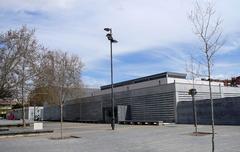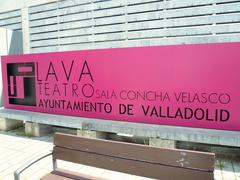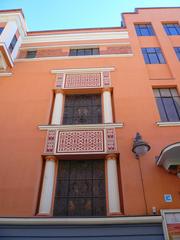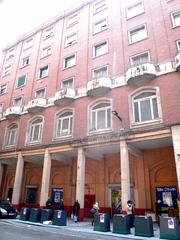Estadio José Zorrilla Valladolid, Spain: Visiting Hours, Tickets, and Historical Significance
Date: 04/07/2025
Introduction
Estadio José Zorrilla in Valladolid, Spain, stands as a testament to the city’s rich cultural heritage and sporting tradition. Named for the celebrated 19th-century poet José Zorrilla y Moral, the stadium is more than a venue for football—it is a symbol of local pride, a community hub, and a gateway to Valladolid’s vibrant historical landscape. Since its inauguration in 1982 during Spain’s hosting of the FIFA World Cup, the stadium has evolved through modernization and expansion, hosting not just Real Valladolid matches but also international sporting events and major concerts. This comprehensive guide explores the stadium’s history, architecture, cultural significance, visiting hours, ticketing information, accessibility, and travel tips for an enriching and seamless experience.
Origins and Historical Development
Football in Valladolid dates back to the early 20th century, with Real Valladolid CF’s earliest matches played on modest grounds. In 1940, the first stadium named José Zorrilla opened, accommodating 10,000 spectators. By the late 1970s, as Spain prepared for the 1982 FIFA World Cup, Valladolid was chosen as a host city, prompting the construction of the current Estadio José Zorrilla on the west bank of the Pisuerga River. The new stadium opened on February 20, 1982, with Real Valladolid defeating Athletic Club, and has since become an iconic part of both the city’s skyline and its collective identity (LaLiga.com; StadiumDB.com).
Architectural Features and Unique Characteristics
Estadio José Zorrilla features a classic bowl-shaped design with asymmetrical stands—its south end (Fondo Sur) is notably lower than the rest, a distinctive element among Spanish stadiums. With an initial capacity of 30,000, subsequent renovations have refined the structure, adding private boxes, partial roofing, and individual seating, ultimately settling at a capacity of 27,618. The stadium’s purple-and-white color scheme reflects the club’s identity, while recent façade renovations have further emphasized its vibrant visual appeal (StadiumDB). Modern lighting, sound systems, and an electronic scoreboard ensure an engaging match-day experience, and the removal of the pitch moat in 2019 brought fans even closer to the action (Wikipedia).
Expansion, Renovation, and Modernization
The stadium has undergone several key expansions and upgrades:
- 1986: North end raised to match other stands; 120 private boxes added.
- 1995: Conversion to all-seater configuration for UEFA compliance, reducing capacity to 26,512.
- 2012–2013: All seats replaced with a contemporary purple-and-white design.
- 2019: Moat removal and improved accessibility, with capacity increased to 27,618.
- 2025: Façade renovation, funded by CVC, transformed the exterior to vibrant violet and enhanced club branding (StadiumDB; EstadiosDB).
Despite ongoing discussions for further large-scale redevelopment—including plans for a symmetrical façade and retractable roof—the stadium maintains its status as a modern, accessible venue (StadiumDB.com).
Sporting and Cultural Significance
Estadio José Zorrilla has hosted a plethora of significant sporting and cultural events:
- 1982 FIFA World Cup: Three group-stage matches.
- Copa del Rey Finals: Including the 1982 final.
- Spanish National Team Matches: Friendlies and competitive fixtures.
- Spanish Rugby: Copa del Rey de Rugby finals, including record attendance in 2016.
- International Rugby: Hosted Spain vs. Fiji in 2024.
- Concerts and Events: Notably Michael Jackson’s final European concert (1997), as well as performances by Bruce Springsteen, Depeche Mode, and others (LaLiga.com; Wikipedia).
Beyond sports, the stadium is a centerpiece for community gatherings, festivals, and macro-events, drawing crowds for electronic music festivals and other large-scale activities (Wololo Sound).
Cultural Identity and Community Hub
Named after José Zorrilla y Moral, the stadium is deeply woven into the civic and cultural fabric of Valladolid. Match days transform the area into a lively social hub, with supporters (“blanquivioletas”) celebrating local traditions, music, and cuisine. The stadium’s role extends to educational programs, youth engagement through the Ciudad Deportiva training center, and numerous charitable and community initiatives (Espana Estadios; Trek Zone).
Visitor Information: Visiting Hours, Tickets, and Tips
Visiting Hours and Guided Tours
- Guided Tours: Available on weekdays and select non-match weekends; typical hours are 10:00 AM–2:00 PM and 4:00 PM–7:00 PM. Tour duration is 60–90 minutes.
- Booking: Recommended via the official Real Valladolid website.
- Admission: Adults €10, children under 14 €5; group and school discounts apply.
Ticketing
- Match Tickets: Purchase online (ticketing portal), at the stadium box office, or authorized outlets. Prices range from €20–€60, with discounts for children, seniors, and club members.
- Special Events: Tickets for concerts and macro-events are available on event-specific platforms (Wololo Sound).
- VIP and Hospitality: Premium packages include exclusive seating and amenities (VIP info).
Accessibility
- Facilities: Ramps, elevators, accessible seating and toilets, and reserved parking. Staff are trained to assist visitors with special needs (LaLiga PDF).
- Parking: Over 1,000 spaces, including dedicated areas for reduced mobility; additional parking at Centro Comercial Vallsur (Vallsur website).
- Public Transport: Accessible by AUVASA bus lines 8, 9, and C2; taxis and ride-sharing services are also available (AUVASA official site).
Facilities and Services
- Seating: Divided into Tribuna, Preferencia, Fondo Norte, and Fondo Sur, with family and away sections (Stadium Seating Plan).
- Food & Beverage: Local snacks and drinks available at kiosks and bars; Real Valladolid fan shop offers official merchandise.
- Restrooms & Family Areas: Well-marked, with baby-changing facilities in select locations.
- Digital Tools: Online seating maps and digital guides enhance visitor navigation.
Tips for Visitors
- Weather: Valladolid’s continental climate means hot summers and cold winters—dress accordingly.
- Language: Spanish is predominant; some English spoken in hospitality areas.
- Payments: Credit/debit cards and mobile payments are widely accepted.
- Smoking: Prohibited inside; designated areas outside.
- Security: Standard checks at entry; gates open 90 minutes before kick-off.
Nearby Valladolid Historical Sites and Attractions
Combine your stadium visit with sightseeing at:
- Valladolid Cathedral
- National Sculpture Museum
- Plaza Mayor
- Museo de la Ciencia de Valladolid (museum website)
- Pisuerga River Park
- Monastery of Nuestra Señora del Prado
Accommodation options include Hotel Silken Juan de Austria and AC Hotel Palacio de Santa Ana (hotel info).
Frequently Asked Questions (FAQ)
What are Estadio José Zorrilla visiting hours?
Guided tours are available on weekdays and select weekends, typically 10:00 AM–2:00 PM and 4:00 PM–7:00 PM. Check the official website for current schedules.
How do I buy tickets?
Purchase via the Real Valladolid website, at the stadium box office, or authorized outlets.
Is the stadium accessible?
Yes—ramps, elevators, accessible seating, toilets, and parking are provided.
Are there guided tours?
Yes, including behind-the-scenes access to locker rooms, press areas, and the pitch.
What attractions are nearby?
Valladolid Cathedral, Plaza Mayor, Museo de la Ciencia, and more—just a short distance from the stadium.
Can I take photos during tours?
Photography is allowed except in restricted areas.
Conclusion
Estadio José Zorrilla is a vibrant centerpiece of Valladolid’s sporting and cultural life. From its historical role in international football to its ongoing contribution as a community gathering place, the stadium offers a rich visitor experience. Whether you’re attending a match, enjoying a concert, or exploring the city’s historic landmarks, Estadio José Zorrilla is an essential stop in Valladolid.
Plan Your Visit
- Visit the official Real Valladolid website for the latest information on visiting hours, tickets, and events.
- Download the Audiala app for real-time updates, exclusive content, and local tips.
- Follow Real Valladolid and Audiala on social media for ongoing news and offers.
Contact
- Website: https://www.realvalladolid.es/
- Phone: +34 983 360 342
- Email: [email protected]
Sources
- History of Estadio José Zorrilla, 2025, LaLiga
- Estadio José Zorrilla Stadium Profile, 2025, StadiumDB
- Estadio Nuevo José Zorrilla, 2025, Wikipedia
- Valladolid Estadio José Zorrilla Macro-events 2025, Wololo Sound
- Valladolid Stadium Facilities and Visitor Guide, 2025, Espana Estadios
- Estadio José Zorrilla Seating Plan, 2025, Stadium Seating Plan
- Valladolid City and Stadium Guide, 2025, Valladolid Adelante




